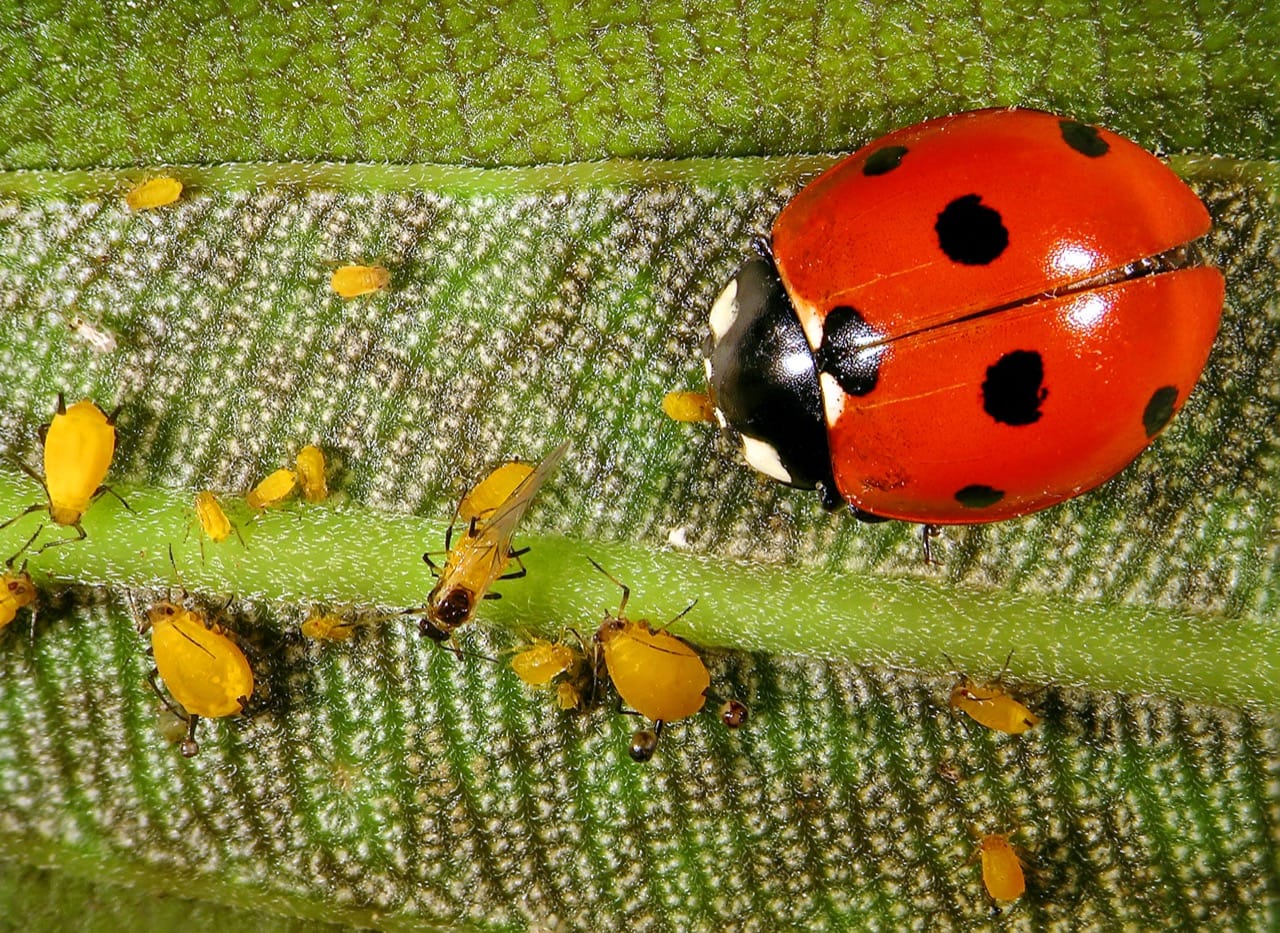Within the vast tapestry of nature’s creations, few insects capture the imagination as vividly as the ladybug. Adored for its charming appearance and appreciated for its appetite for pests, this little beetle is a giant in the world of biological pest control. The ladybug, or ladybird beetle as it is known in some regions, is not only a child’s delight but also an essential player in the ecological balance of gardens and farms worldwide.
Characteristics / Physical Description
The ladybug is instantly recognizable by its rounded, dome-shaped body and vibrant colors. Most species sport a red or orange background dotted with black spots on their elytra (hardened forewings), although color variations can include yellow and even pink. These spots are thought to serve as a warning to predators about their distastefulness. An adult ladybug measures from 1 to 10 mm, depending on the species. Beneath their elytra, ladybugs have delicate, flying wings which, when not in use, are neatly folded against their bodies.
Taxonomy and Classification
Ladybugs belong to the family Coccinellidae, which encompasses over 6,000 species spread across the globe. They are part of the order Coleoptera, which includes all beetles. The scientific name for the common European ladybug is Coccinella septempunctata, which refers to the seven distinct spots typically found on its body.
Behavior and Social Structure
Ladybugs demonstrate a variety of behaviors that are fascinating. They are predominantly solitary but can often be found in groups, especially during overwintering when they come together to hibernate. Ladybugs communicate using pheromones, chemical signals that can convey different messages such as aggregation or alarm.
Habitat and Distribution
Ladybugs are incredibly adaptable and can thrive in diverse environmental conditions. They are found in nearly every part of the world, from tropical rainforests to arid deserts, although they prefer warm climates and live where aphids or scale insects, their primary food source, are plentiful.
Diet and Feeding Habits
The diet of ladybugs primarily consists of aphids and small insects, which makes them invaluable allies in agriculture for natural pest control. An adult ladybug can consume up to 50 aphids a day, and their larvae are even more voracious.
Breeding and Reproduction
The reproductive cycle of a ladybug begins with the laying of eggs in clusters or rows on the undersides of leaves, where aphids are likely to be found. The eggs hatch into larvae which, over a period of weeks, will molt multiple times before pupating. Finally, they emerge as adults, ready to continue their cycle of feeding and reproduction.
Relationship with Humans
Humans and ladybugs share a mutually beneficial relationship. Gardeners and farmers encourage the presence of ladybugs as an organic method to control pest populations. Moreover, their appealing appearance has made them symbols of good luck in various cultures, enhancing their popularity.
Evolutionary History
Ladybugs are believed to have evolved over millions of years, with adaptations that have perfected their roles as predators of soft-bodied insects. Their bright colors and patterns are classic examples of aposematism, an evolutionary trait where warning signals are developed to deter predators.
Use as Research Animals
In scientific research, ladybugs are studied for their behaviors and ecological role, particularly in the area of biological pest control. Understanding their preferences and life cycle helps enhance their effectiveness as natural predators in agricultural settings.
Ladybugs not only contribute to the biodiversity of their habitats but also play a critical role in the natural mechanisms of pest control. As we continue to explore and appreciate these small yet mighty beetiles, their importance in the natural world remains undeniable.

